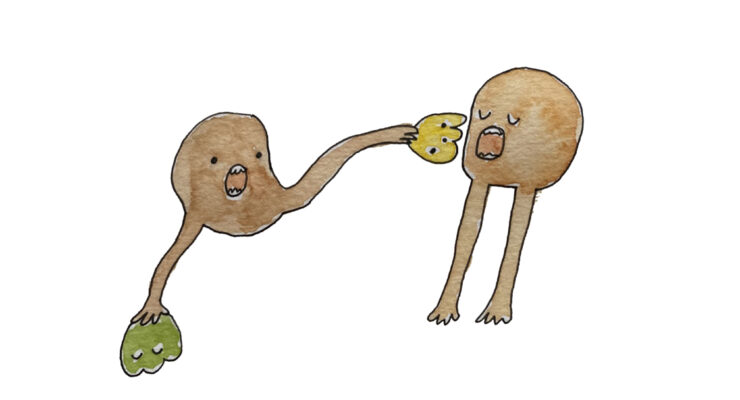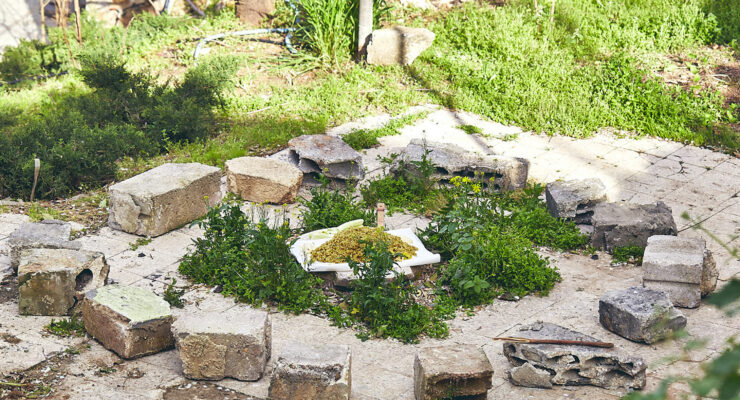Spectacular centrepieces redesigned
Design students from Berlin and Copenhagen invite to the table at Schloss Pillnitz, where they are exhibiting their innovative centrepieces designed to evoke dialogue.
For one semester, design students from the weißensee academy of art berlin and the Royal Danish Academy of Fine Arts (KADK) in Copenhagen were invited by the Kunstgewerbemuseum (Museum of Decorative Arts) Dresden Schloss Pillnitz to explore how porcelain, ceramic and glass objects may initiate, encourage and influence conversations at the table.
In the Baroque era, festive dinner tables were decorated with particular centrepieces, so-called “conversation pieces”. Such a “conversation piece” was by no means purely decorative. According to the definition of the Cambridge English Dictionary it was “an unusual object that causes people to start talking”. What qualities must objects have to get people to start talking at the table? In what direction could the conversation be steered? What are relevant topics, and how can they be brought into play? Explicitly through spectacular installations or incidentally through the food and drinking vessels themselves and the sensory perceptions they evoke when used?
"When we eat together, we get to know each other."
A meal is not only about the intake of food. Rather, it is associated with a complex network of perceptions of the senses, with social interactions, and not least with communication. When we eat together, we get to know each other, establish social relationships and orders and negotiate everyday issues and big topics. The table is a place where cultures with their different customs, rituals and taboos can meet and interact. What could be the qualities of an object that is part of such a meal but is also more than just a vessel to contain food?
Christin Amann - Ordre Coulant

Elif Cak Koem - MONO

The two project groups from Copenhagen and Berlin explored Baroque dining culture at the Kunstgewerbemuseum of the Staatliche Kunstsammlungen Dresden (Dresden State Art Collections) and at the Porzellansammlung (Porcelain Collection), learned about porcelain production at the Meissen Porcelain Manufactory and developed their own design approaches in group workshops on ceramic 3D printing and on working with edible material. In addition, the German students also experimented with glass at the Harzkristall Glassworks in Derenburg and at the Glass Factory in Boda, Sweden.
The results of the project, ranging from functional objects over experiments with the materials to installations, are now displayed as part of a spatial installation in two historic rooms at the Kunstgewerbemuseum in Schloss Pillnitz: as a set table in the Watteau Hall, and a still life in the Yellow Tea Room. They are showcased in a way that enables them to communicate, both with each other and with the space, creating a dynamic dialogue. Last but not least, they invite the visitors to join the conversation.

Project lead: Prof. Barbara Schmidt, Berlin, Prof. Martin Kaldahl, Copenhagen, Prof. Flemming Tvede Hansen, Copenhagen, Klára Němečková, curator, Dresden
Project support: Babette Wiezorek (ceramic 3D printing), Charlotte Dachroth (concept), Glass maker Peter Kuchinke (glass), Carolin Wachter, Sabine Selmke (ceramics workshop Berlin), Andreas Kallfelz (writing), Antonia Brell, Anna Bierler (print and web design), Katleen Arthen (stage designer, exhibition design), Sabine Voigt (translation), Workshops at the weißensee academy of art berlin
Many thanks to our partners: Kunstgewerbemuseum Schloss Pillnitz Dresden, Meissen Porcelain Manufactory, Glasmanufaktur Harzkristall, The Factory, Boda, Sweden










